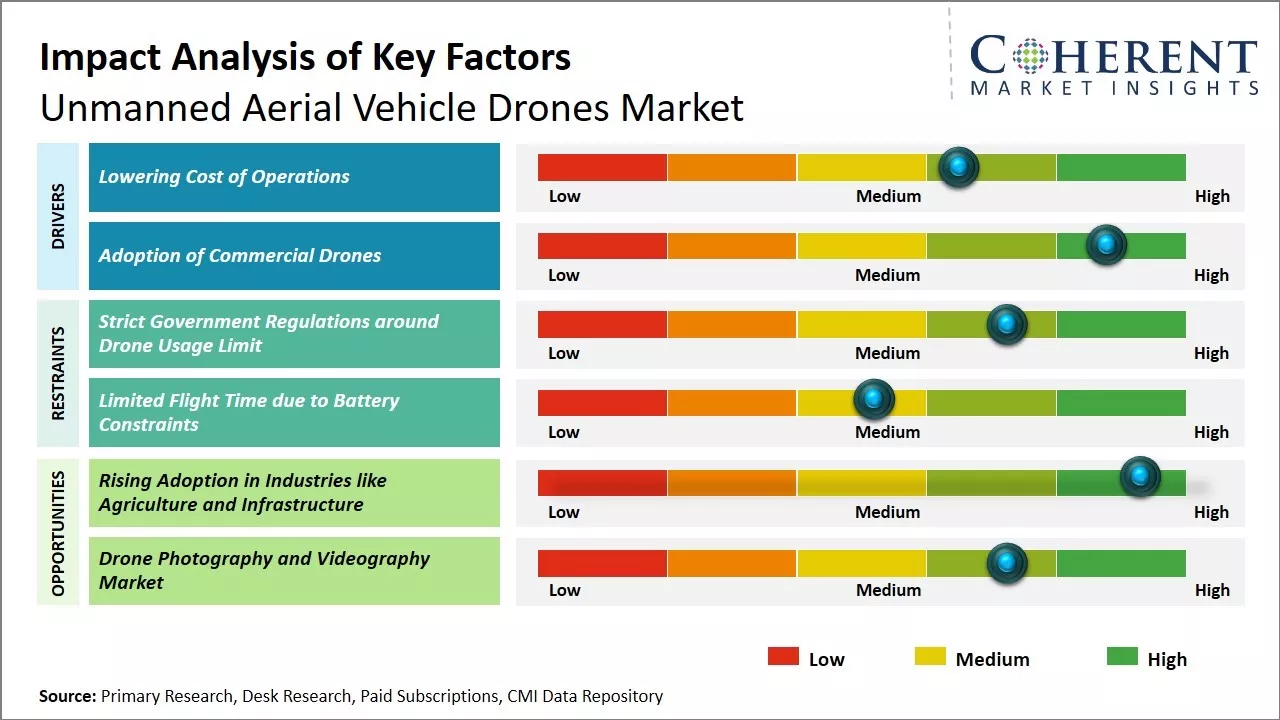Unmanned aerial vehicle drones market is estimated to be valued at USD 31.41 Bn in 2025 and is expected to reach USD 63.63 Bn by 2032, growing at a compound annual growth rate (CAGR) of 10.6% from 2025 to 2032.

To learn more about this report, Request sample copy
The market is expected to witness significant growth during the forecast period. Rising adoption of drones across various industries for applications like infrastructure monitoring, agriculture monitoring, product delivery and photography is driving the market growth. Drones are also increasingly being used to monitor climate change and environmental impact. With reduction in regulatory restrictions, drones are finding critical applications in emergency response and monitoring. Furthermore, technological advancements in drones like increased battery life, autonomous flight and payload capacities are supporting increased commercial applications. However, concerns around drone privacy and security continue to pose challenges for full realization of growth opportunities. Increased investments in research and development of smart drones along with convergence of drones and 5G technologies can drive the market growth in the near future.
Lowering Cost of Operations
With UAV drones being able to carry out tasks that were traditionally done by manned aircraft or large equipment on the ground, it is significantly lowering the costs of operations for various industries. Drones can access hard to reach areas easily for inspection purposes with minimal support crew. This enables industries like oil & gas, construction, mining, and others to inspect remote infrastructure and gather data in a cheaper manner. Drone operations does not require setting up large manned teams at remote locations like offshore rigs or construction sites in difficult terrains. It results in reduced manpower costs and need for setting up temporary facilities at such locations. Similarly for agricultural sector, drones can monitor farms and carry out crop inspections much more easily than deploying humans. This allows farmers to keep a close check on their fields without having to spend on traveling to remote locations or hiring pilots. Even for filmmaking and media production houses, aerial drone filming is proving to be more cost effective than operating helicopters or planes, providing flexibility to capture shots that were not possible earlier within tight budgets.
For instance, in August 2020, DJI, a drone manufacturing company, entered into partnership with U.S.-based Shell Oil Company to test and deploy DJI drone technology at its Deer Park Manufacturing Complex to improve efficiency and worker safety during industrial inspections and emergency incident response.
Joining thousands of companies around the world committed to making the Excellent Business Solutions.
View All Our Clients